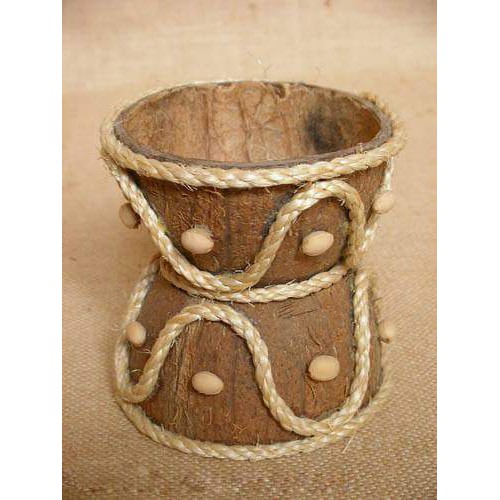coco-shell-bowl-rope work
coco-shell-bowl-rope work
-
₹999.00
-
Product Code:Hand Works
- In Stock
- Ex Tax: ₹999.00
Creating a coconut bowl with rope work involves the following steps:
1. Harvesting and Cleaning: The coconut is harvested from a mature coconut palm tree, and the outer husk is removed. The coconut shell is thoroughly cleaned to remove any remaining husk fibers or debris.
2. Cutting and Shaping: Using appropriate tools, artisans carefully cut the coconut shell into the desired size and shape for the bowl. The top portion of the shell is typically removed to create the opening.
3. Smoothing and Polishing: The rough edges of the cut coconut shell are smoothed using sandpaper or polishing tools, creating a smoother surface.
4. Rope Selection: An appropriate rope is chosen for the rope work. Natural fibers such as jute, sisal, or cotton are commonly used. The thickness and color of the rope can vary based on personal preference or design.
5. Measuring and Cutting the Rope: The rope is measured and cut into lengths that are suitable for wrapping around the coconut bowl. The length of the rope will depend on the size of the bowl and the desired rope work pattern.
6. Applying Adhesive: A strong adhesive, such as glue or epoxy, is applied to the surface of the coconut shell. This adhesive will help secure the rope to the shell.
7. Wrapping the Rope: Starting from the bottom of the coconut shell, the rope is carefully wrapped around the bowl in the desired pattern. The rope is pressed firmly against the adhesive to ensure a secure bond. As the rope is wrapped, it gradually covers the entire surface of the coconut shell.
8. Finishing Touches: Once the rope has been wrapped around the coconut shell, any excess rope is trimmed to create a clean and neat appearance. Additional adhesive may be applied to secure the end of the rope.
9. Drying and Curing: The coconut bowl with rope work is left to dry and cure according to the instructions of the adhesive used. This allows the adhesive to fully set and ensure the rope is firmly attached.
10. Final Quality Check: The completed coconut bowl with rope work is inspected for any loose or unevenly wrapped areas. Any necessary adjustments or touch-ups are made to ensure the bowl meets the desired quality standards.
It's important to note that the specific techniques and materials used for rope work on coconut bowls may vary depending on the artisan's expertise and preferred style. The above steps provide a general overview of the process.





